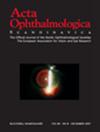Comparison of blind children's gait pre/post introduction of a wearable assistive safety device
Abstract
Aims/Purpose: Infants with congenital mobility visual impairment or blindness (MVI/B) walking delays are due to exposure and insufficient contact with their environment. Assistive safety devices provide contact and protection. [1,2] Our study measured foot motility/gait in pediatric patients with a MVI/B to quantify the benefits of wearing a Pediatric Belt Cane.
Methods: Videos of fifty pediatric patients (Mean age = 26 mos, SD = 10.8) with a MVI/B Before and After were analyzed using the MediaPipe platform to perform gait analysis. Subsequent analyses included linear regression analysis and data smoothing to calculate metrics for foot mobility, approximate speed, step frequency, and estimated step lengths. T-test analysis was performed to calculate the significance of differences in gait analyses.
Results: Patients utilizing Pediatric Belt Canes showed significant percent increase in foot mobility (p < .05), percent improvement in approximate speed (p < .05), percent reduction in step frequency (p < .05), and percent increase in step length (p < .05).
Conclusions: Pediatric Belt Canes lead to marked, quantifiable improvements in walking for children with a MVI/B, supporting the conclusion that assistive safety devices are a medical necessity in the care and management of all children with a MVI/B (e.g., lack visual preview). Further work increasing the choice of assistive devices is warranted for sport, blind children with motor impairments, etc.
References: 1. Chong, P., Enzenauer, R., Ambrose-Zaken, G. Comparative video gait analysis of assistance for cortically visually impaired Children. International Council of Ophthalmology, WOC, August 17, 2024, Vancouver. 2. Chong, P. Comparative video gait analysis of assistance for mobility visually impaired Children. AAPOS, April 8, 2024, Austin, TX.

 求助内容:
求助内容: 应助结果提醒方式:
应助结果提醒方式:


